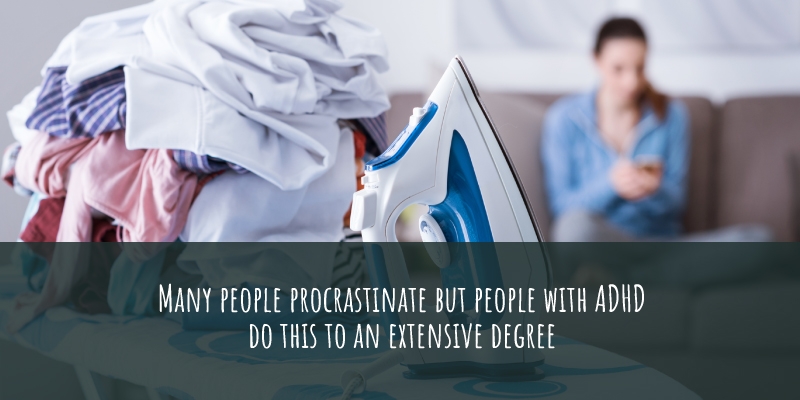Top Tips For Getting Organized With ADHD
ADD and ADHD: Pretty much the same thing, right? They are certainly used interchangeably. So what is the difference? According to add.org:
‘ADD was the diagnostic term used in the third edition of the DSM released in 1980. Later revisions of the DSM, changed the diagnosis name to Attention Deficit/Hyperactivity Disorder to reflect new findings in research…Though using the term ADD may in some cases refer more specifically to ADHD of the Inattentive Presentation, the term is just as often used as a substitute for ADHD – with the unspoken assumption that “type” or presence of particular symptoms like hyperactivity would have to be specified on a case by case basis.’
ADHD stands for Attention Deficit/Hyperactivity Disorder, and there are three different subtypes of the disorder:
- Hyperactive-Impulsive type, which is more common in men and children, and manifests itself in blurting things out, interrupting people, and having difficulty sitting still

- Inattentive type, which is more common in women and girls, and manifests itself in difficulty staying focused and forgetfulness
- Combined type, in which case patients show six or more symptoms of inattention and/or hyperactivity.
Since May is Mental Health Awareness Month, we are writing a series of posts about the way different mental health issues can affect your ability to get and stay organized. Our number one takeaway from these posts has been that self-care is priority number one — meaning, getting help from a qualified professional and going from there, clean kitchen or no clean kitchen. Your health is the most important thing here, and no amount of agitation about whether clothes are put away or the bathroom is spic and span will help you when you’re experiencing symptoms of depression, anxiety, OCD, or ADHD. In fact, focusing on these externals can only make your symptoms worse. When you’re not feeling your best, the best thing to do is to up your self-care routine as much as you possibly can. This doesn’t mean let your house go, or let yourself go. It does mean do what feels manageable to you in the moment, and engage in self-care practices, like eating healthy food, taking walks, snuggling with your pet, going to therapy, meditating, exercising, and getting a proper night’s sleep. These are basic things that can seem insurmountable when one is struggling with their mental health. In this post, we will focus on the symptoms of ADHD and elaborate on what you can do in the moment to get organized, even when it feels challenging. We will be focusing on ADHD specifically, and how one diagnosed with the disorder can get and stay organized in their home and at work.
ADHD: Diagnosis and Symptoms
As we said previously, there are three types of ADHD, and each present more commonly in different sections of the population, with different ways of manifesting in the mind and body. At add.org, there is a symptom questionnaire that you can download and fill out if you suspect you might have ADHD. The questions have to do with your ability to start and finish projects, degree of difficulty remembering obligations, propensity to fidget or make careless mistakes, and so on. Below is a general list of symptoms usually seen in adults with ADHD (remember that these are often in extreme form). Many people procrastinate, for example, but people with ADHD do this to an extensive degree:
- Difficulty getting organized

- Procrastinating
- Have trouble completing projects
- Make impulsive decisions
- Get easily bored
- Tune out while people are speaking to you
- Low self-esteem
- Doing or saying things without thinking them through first
- Make careless mistakes
- Have relatives with ADHD
Again, many of us may have these traits, but they don’t feel unmanageable or unsurmountable. When you have adult ADHD, these difficulties make life feel much like a race that you’re constantly trying to finish, or an endless hill you’re trying to climb. With the right therapist and/or medication/treatment plan, you could feel a whole lot better… and function more efficiently, too.
How to Get and Stay Organized with ADHD
This is the crux of our article, really. We are professional organizers, and we’ve seen it all (trust us!). Here are some things we found helpful when getting organized with ADHD:
- Separate complex tasks into manageable/smaller pieces. For example, if you’re cleaning your entryway, separate it into ‘zones’ — closet being one, console table being another, and so on. Do this with every room in the house.
- Put your tasks in order, beginning with the easiest one and ending with the most difficult. This will help you get started and gain some momentum.
- Come up with some sort of filing system that works for you.
- Have a general box or tray where you can set your keys, glasses, wallets, etc. when you walk in the door. Your purse or briefcase can also be placed here for the next day.
- Use clear storage containers.

- Use the 15 minute method: Start a project and set your timer for 15 minutes. When the timer goes off, if you haven’t finished the project, decide whether or not you want to keep going with it and set it for another 15 minutes. Keep doing this until you either want to quit or are finished with the project. Breaking the project up this way makes it a whole lot less overwhelming than it might be otherwise.
As you can see, many of these tips can be found in our book, primarily for the Organic (ENFJ, ENFP, INFJ, INFP) and Smart (ENTJ, ENTP, INTJ, INTP) personality types. There are solutions and resources available if you’re struggling. Don’t hesitate to get help when you need it — that is one of the main traits of highly successful people. You have to recognize your strengths and weaknesses before you can make positive changes. The sooner you can identify, accept and ultimately embrace these things, the closer you’ll be to mental — and organizational — freedom!
